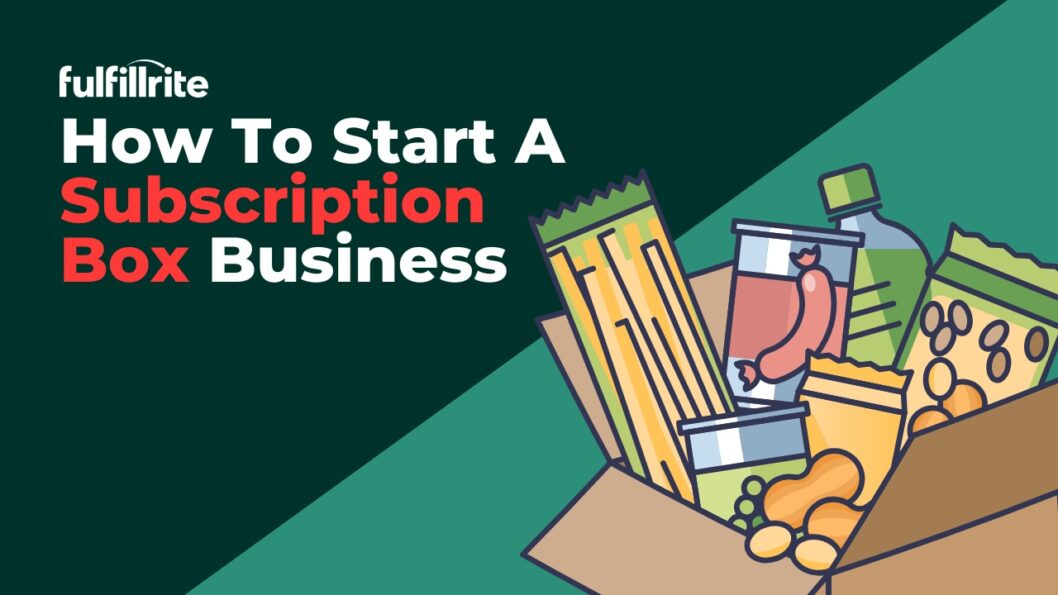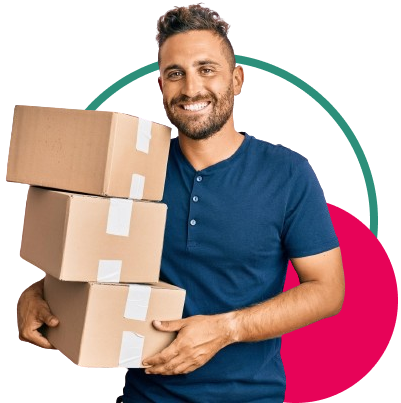Subscription boxes started as a trend, but they became something differently entirely over the course of the 2010s and 2020s. What started with beauty boxes and monthly snacks has evolved into a whole ecosystem of niche products, loyal customers, and steady revenue.
Nowadays, subscription boxes are a steady and popular business model with a lot of potential for success—full stop.
Why are they still so popular? Two reasons.
First, people like getting surprises in the mail. It’s simple, but true. Nothing can give you joy quite like having something you really want delivered to you right at the moment you want it the most.
Second, people like knowing what they’re paying for each month. This is especially true if it feels tailored to them. Personalized and hyper-specific boxes are thriving.
Think of a rare tea box, or a monthly drop of enamel pins for fantasy fans. Even pet owners are getting in on it with curated toys and treats delivered like clockwork.
But here’s the part most first-timers overlook: fulfillment is everything. You can have the best product idea in the world, but if it arrives late, broken, or melted, it won’t matter.
That’s why companies like Fulfillrite exist. We’re here to make sure your boxes land on doorsteps looking exactly how you intended.
This guide breaks it all down: how to start a subscription box business, from picking your niche to building your prototype, launching your store, and choosing the right fulfillment partner.
What are subscription boxes?
Subscription boxes are recurring deliveries. They are usually delivered monthly, sometimes quarterly, and are filled with themed products. Customers pay a set fee and get a box of surprises, refills, or curated items.
It’s like retail, only flipped around. Instead of the customer going to the product, the product comes to them.
There are a few main types:
- Food boxes: snacks, specialty ingredients, meal kits
- Beauty boxes: skincare, makeup, samples
- Hobby boxes: crafts, puzzles, model kits
- Pet boxes: treats, toys, grooming products
- Lifestyle boxes: self-care, fitness, home goods
And then there are hyper-niche subscription boxes. These target very specific audiences, and they’re often where the real loyalty (and profits) live. Think:
- A box of Japanese stationery for bullet journalers
- TTRPG zines and dice for indie game fans
- Monthly seeds and garden tools for zone-specific growers
So if you’re wondering what are subscription boxes good for, the answer is: creating repeat customers who feel seen and understood.
Planning your subscription box business
Before you buy a single product or build a website, take a step back. Planning is where smart subscription box businesses get ahead—and where rushed ones usually flop.
Start by defining your niche. Who is your box for? What do they care about? If your answer is too broad (“people who like snacks”), zoom in.
Maybe it’s vegan snacks. Or nostalgic childhood snacks. Or snacks from one specific country. Go deep, not wide.
Once you have a niche, research the competition. Who else is selling to this audience? What’s in their boxes? How much do they charge? Sign up for one or two boxes yourself so you can experience them firsthand.
Next, decide what kind of box you’re making:
- Curated: You’re selecting items made by others. Example: a “cozy reading” box with tea, candles, and a paperback novel.
- Manufactured: You’re making the products yourself (more control, but higher costs).
- Sourced: A mix. You’re white-labeling or working with vendors, but you’re not inventing products from scratch.
Then build your model. Will it ship monthly, quarterly, or on a rolling basis? Will you offer different tiers? Are subscribers billed per box or annually?
Planning well means fewer surprises later. It’s how you make a subscription box that people will actually want—and how you run a subscription box business that works long-term.
If you’re thinking about how to start a monthly subscription box, this is the foundation: niche, audience, product, model. Get those right, and everything else gets easier.
Validating your subscription box concept before you over-invest
If you ask experts in the subscription box industry the worst mistake you can make, they will often say some variant of “failing to validate your subscription box idea.” After all, if you can’t prove that people want to buy what you’re selling, it’s going to be hard to get them to buy, let alone subscribe for repeating purchases.
“The most common issue we tend to see is brands committing to large print runs before fully validating demand,” says Brian Kroeker, President of Little Rock Printing. “They overproduce custom boxes or inserts before knowing the subscriber base, which often leads to waste inventory when things shift.”
Andres Bernot, Founder of WOW! T-Shirts has a similar opinion, saying that “the greatest sin that new subscription box brands commit is failure to really comprehend their audience. Most of the entrepreneurs are in love with their idea and they miss the most important process of market research. They factor that they will sell their product automatically without the justification whether people need it or whether they would subscribe frequently.”
He further states that “at WOW! T-Shirts, we spent months to obtain first-hand feedback of prospective buyers and then we did the first product design. This has saved our time and money and prevented us bringing a product to market that nobody wanted. This is one of the steps you should not skip as it is a very risky.”
To make a long story short: test early and save yourself a lot of trouble!
Building your subscription box brand and prototype
You’ve got a plan. Now it’s time to make it real. That starts with your brand and your prototype.
Your brand is more than a name or a logo—though you’ll need both. It’s how people feel about your box before they even open it. The name should hint at the experience. The visuals should match the vibe.
If you’re sending out a hyper-niche subscription box for retro vinyl collectors, you don’t want sleek minimalism. You want texture. You want nostalgia.
Once you’ve got a name and a look, test the idea.
Start small. Reach out to friends, family, or an email list if you have one. Offer a sneak peek or a discounted trial. Use their feedback.
You’ll spot problems early, and you’ll figure out which parts of your pitch people actually care about.
Then make a prototype. Not a fancy render. A real box. Put in the products. Weigh it. Pack it the way you’d send it to a paying customer. Then figure out how much that costs you.
This is where you need to think about packaging. Good packaging protects your stuff, sure—but it also sells the experience. If it looks and feels cheap, the whole box feels cheap. This is where a subscription box maker can help. They do short-run custom boxes that look great without blowing your budget.
The better you make a subscription box early on, the easier everything else becomes.
“A box idea should be tested small scale applying to real customers to make it valid,” says Hasan Hanif, Founder of Colourvistas. “Instead of investing in a large manufacturing cycle, first make a prototype and then sell it to a limited circle of individuals. Test the waters by using social media or some sort of targeted ad to build an interest, then when you get an interest then you go all-in but keep an eye on the numbers such as the conversion rates and numbers of pre-orders yet not the likes or comments
Setting up your online store
The next step is getting your store online and making sure it works. Fortunately, you don’t need to build a website from scratch. Plenty of platforms are made for subscription box eCommerce.
Here are a few popular ones:
- Shopify – great if you want flexibility and lots of add-ons
- Cratejoy – built specifically for subscription boxes
- Subbly – another box-first platform with built-in tools for recurring billing
Pick one that fits your tech comfort level and your business goals. Then customize the basics: homepage, product pages, checkout. Make sure you’ve got clear photos, a short video if you can swing it, and plain language that explains what the box is, who it’s for, and what they get.
Pricing matters more than you think. It needs to cover your costs—product, packaging, shipping, labor—but still feel like a deal. Anchor pricing helps. That means showing a breakdown: “$60+ value for $35/month.”
Don’t forget about payments. Recurring billing is what makes the subscription model work. Most subscription box eCommerce platforms handle that for you, but make sure the setup is smooth and secure.
If you’re wondering how to start a box subscription online, this is the path.
Keep it simple. Use tools that are built for boxes. And test every part of the checkout process twice.
Fulfillment, shipping, and scaling for subscription box businesses
You’re almost there. The last major piece is figuring out how your box actually gets to your customer. And this part? It’s where many first-time founders fall short.
Fulfillment sounds simple. You put stuff in a box, slap on a label, and ship it. But when you’ve got dozens, then hundreds, then thousands of boxes going out each month, it gets chaotic fast.
You need a system for picking, packing, labeling, and shipping—ideally one that’s accurate, fast, and scalable. That’s where working with a 3PL (third-party logistics provider) makes sense. You make the products. They handle the rest.
Fulfillrite is a 3PL that specializes in eCommerce and subscription box fulfillment. Once you’ve got your product ready to ship, we can take care of the logistics. That includes:
- Lot tracking for expiration-sensitive goods like supplements or food
- Climate control for items that can’t get too hot or cold
- Software integrations with Shopify, Cratejoy, Amazon, and more
We’re fast, too—most orders ship the same day. And when customers get their boxes on time, in perfect shape, they stick around.
If you’re serious about growth, work with a fulfillment partner early. It’s way easier to set up good systems before you’ve got a backlog of orders and angry emails.
So how to start a subscription box business without getting buried in logistics? Don’t go it alone. Pick a partner who knows what they’re doing.
And if you’re wondering how do you start a subscription box company that actually scales? This is the playbook: niche product, clean brand, solid store, and a 3PL like Fulfillrite behind the scenes.
Final Thoughts
Subscription boxes are still going strong in 2025. Not because they’re trendy, but because they solve real problems for people. They deliver value, build habits, and create anticipation. That’s a rare combo.
But boxes don’t ship themselves. You need a plan. A real one with steps, tests, numbers, and systems. That’s how you build something sustainable.
So if you’ve read this far, here’s the takeaway: take your time upfront. Nail your niche. Build a strong prototype. Choose the right tools.
And when it’s time to ship, don’t wing it. Partner with someone who’s built for this.

